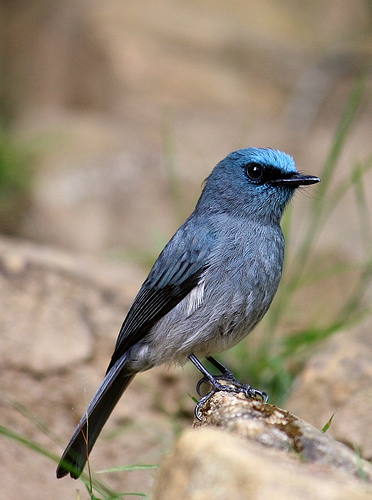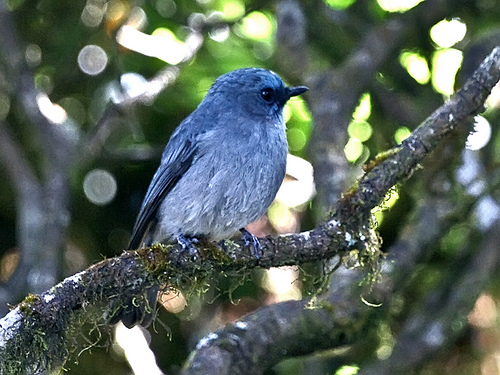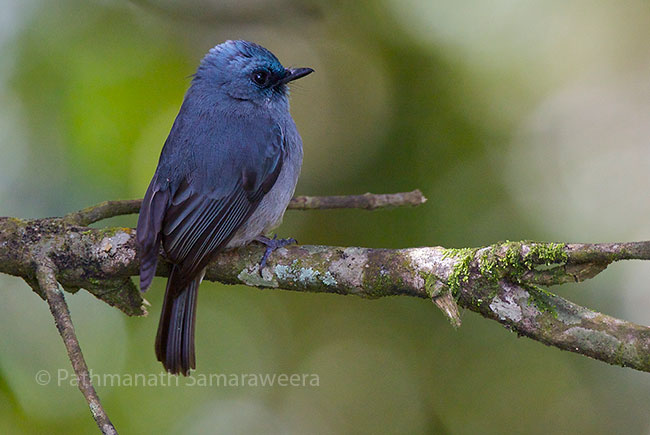
Eumyias sordida
SUBFAMILY
Muscicapinae
TAXONOMY
Eumyias sordida Walden, 1870.
OTHER COMMON NAMES
English: Dusky-blue flycatcher; French: Gobemouche de Ceylan;
German: Ceylonschnдpper; Spanish: Papamoscas de Sri Lanka.
PHYSICAL CHARACTERISTICS
The body length is about 6 in (15 cm). The sexes are colored
alike, having an ashy-blue back, head, chest, and tail and a
whiter belly. The forehead is a brighter blue color, and a black
line runs forward from the eyes. The juvenile is more spotted.
DISTRIBUTION
A resident species occurring only in Sri Lanka.
HABITAT
Occurs at the edges of forest and woods and in shady gardens.
Occurs at various altitudes, but most abundant at 3,950–6,000
ft (1,200–1,830 m).
BEHAVIOR
A nonmigratory species. Pairs of breeding birds defend a territory.
The song is a series of six to eight clear notes.
FEEDING ECOLOGY AND DIET
Catches flying insects by an aerial sally from a low perch. Often
returns to the same perch.
REPRODUCTIVE BIOLOGY
Nests in forest or woods, where a cup-shaped nest made of
mosses and other fibers is placed close to the ground on a
ledge, in a rocky crevice, or in a shallow tree-cavity.
CONSERVATION STATUS
An endemic species of Sri Lanka, but locally abundant and not
threatened according to IUCN criteria. However, its forest
HABITAT
is rapidly being lost.
SIGNIFICANCE TO HUMANS
None known, except for the economic benefits of birdwatching.
Other popular Animals
Photo Gallery of - Dull-blue flycatcher




 Animalia Life
Animalia Life